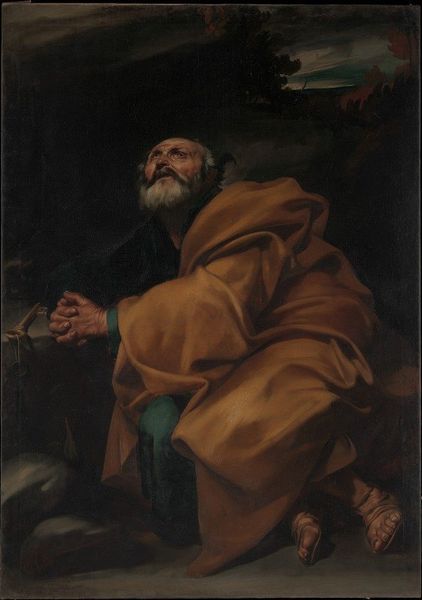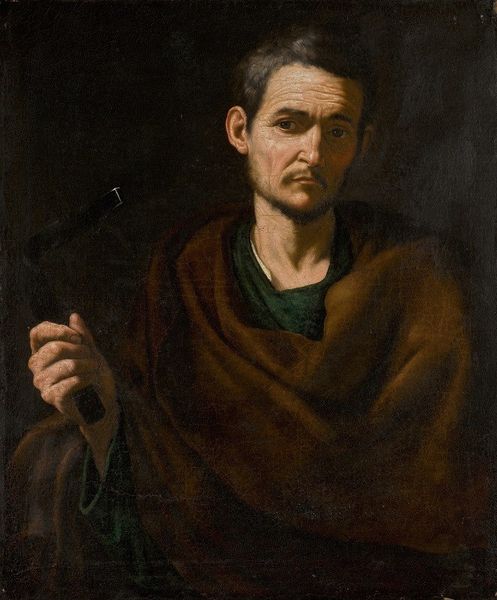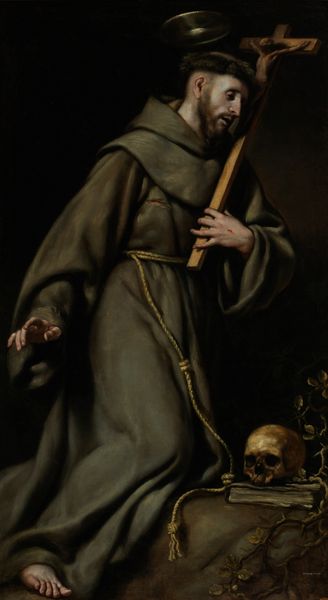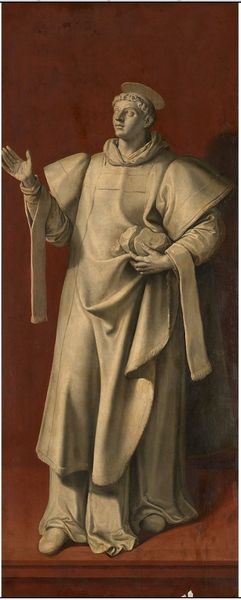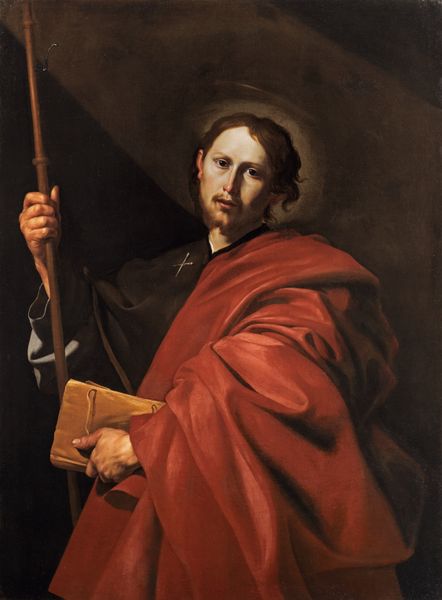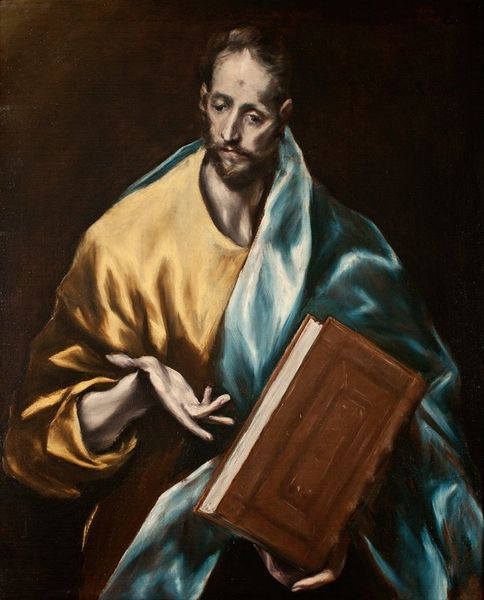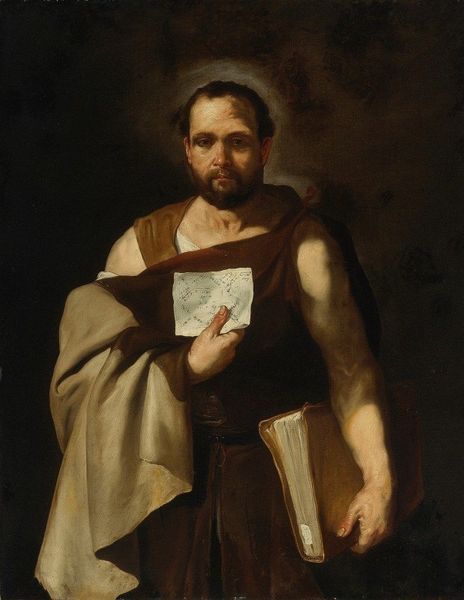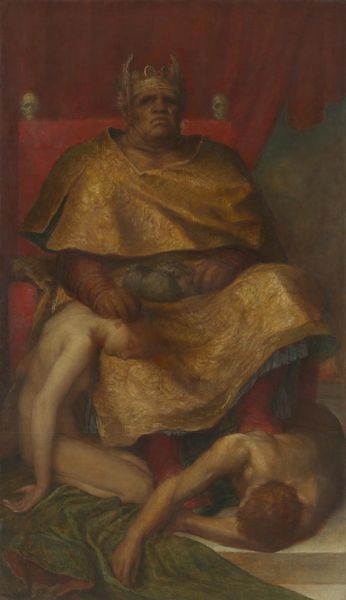
painting, oil-paint
#
portrait
#
baroque
#
painting
#
oil-paint
#
romanesque
#
christianity
#
history-painting
Copyright: Public domain
Editor: Here we have "Saint Thomas" painted in 1620 by Diego Velázquez, done with oil paint. There's a directness in the gaze and strong lighting that holds my attention, yet his features almost disappear into the dark background. How would you interpret this work? Curator: Considering a Formalist approach, note first the striking chiaroscuro, the dramatic contrast between light and shadow. The artist skillfully models form by manipulating light to guide the viewer's eye. Notice how Velázquez uses the ochre robe as the visual focal point. Editor: It seems almost like a spotlight effect. How does that influence the overall composition? Curator: The composition hinges on the diagonal placement of the staff which bisects the pictorial space. Also, attend to the contrasting textures: the smooth burnished staff and velvety folds of the garment are quite compelling. These stylistic choices pull the viewers attention toward symbolic and art-historical implications in this work. Editor: Interesting. So, the interplay of light, texture, and composition underscores deeper symbolic readings? Curator: Precisely. The formal devices do not merely depict, but enact the theological significance and artistic ambition that transcends literal depiction. Editor: This gives me a fresh view on analyzing Velázquez’s technique and meaning through form itself, which I appreciate. Curator: Agreed, paying attention to the forms facilitates access to cultural history by providing another tool. I am confident our discussion helped others see how intrinsic art components serve symbolic meanings.
Comments
No comments
Be the first to comment and join the conversation on the ultimate creative platform.
